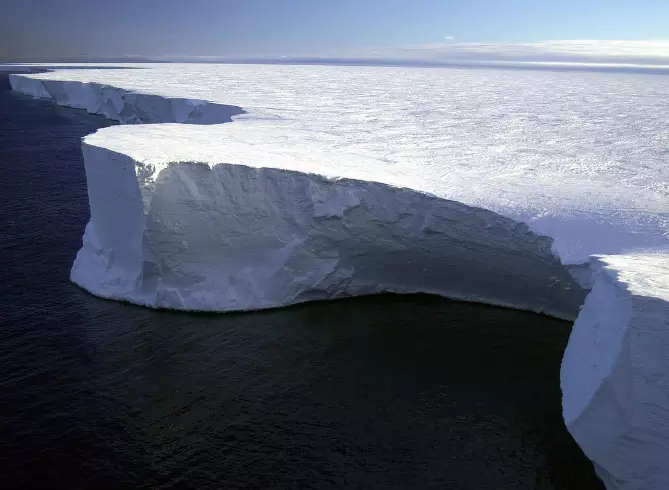TRENDING TAGS :
World's largest iceberg is moving forward after 30 years
This iceberg, named A23A, broke away from the Antarctic coastline in 1986. But it quickly sank into the Antarctic's Weddell Sea and became an island of ice. Covering an area of approximately 4,000 square kilometers (1,500 square miles), the iceberg is more than twice the size of Greater London. This icy rock, which has been flowing rapidly since last year, is now moving through Antarctic waters.
The world's largest iceberg is now moving forward after being stuck on the sea floor for more than 30 years.
This iceberg, named A23A, broke away from the Antarctic coastline in 1986. But it quickly sank into the Antarctic's Weddell Sea and became an island of ice. Covering an area of approximately 4,000 square kilometers (1,500 square miles), the iceberg is more than twice the size of Greater London. This icy rock, which has been flowing rapidly since last year, is now moving through Antarctic waters.
According to Dr. Andrew Fleming, a remote sensing expert of the British Antarctic Survey, it had become stable on the sea floor about 4 decades ago, but gradually it started decreasing in size to such an extent that its grip became loose and 3 years ago he first observed it and saw movement in it. Andrew asked some of his colleagues about this. Initially it was thought that there might have been a possible change in the temperature of the water in this slab of ice, which might have triggered it. But everyone believed the time had come for it to move forward.
A23A has been accelerated by winds and currents in recent months and is now passing the northern tip of the Antarctic Peninsula. It is expected to soon flow into the Antarctic Circumpolar Current, colloquially known as the 'Iceberg Path', which will likely carry it towards the South Atlantic. Scientists are keeping a close eye on A23A's journey because it could interfere with the foodways of millions of seals, penguins and other sea birds that breed on South Georgia Island, preventing them from properly feeding their young.
Icebergs play an important role in the environment. According to Dr. Catherine Walker of America's Woods-Hole Oceanographic Institution, these icebergs are life-giving in many ways. These are the basic points of many biological activities. As icebergs melt they release mineral dust, which serves as a source of nutrients for organisms at the base of marine food chains. However all icebergs are bound to eventually melt and disintegrate.



